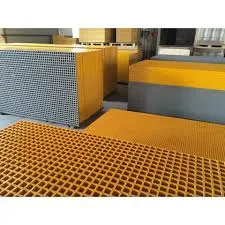
-
 Afrikaans
Afrikaans -
 Albanian
Albanian -
 Amharic
Amharic -
 Arabic
Arabic -
 Armenian
Armenian -
 Azerbaijani
Azerbaijani -
 Basque
Basque -
 Belarusian
Belarusian -
 Bengali
Bengali -
 Bosnian
Bosnian -
 Bulgarian
Bulgarian -
 Catalan
Catalan -
 Cebuano
Cebuano -
 China
China -
 China (Taiwan)
China (Taiwan) -
 Corsican
Corsican -
 Croatian
Croatian -
 Czech
Czech -
 Danish
Danish -
 Dutch
Dutch -
 English
English -
 Esperanto
Esperanto -
 Estonian
Estonian -
 Finnish
Finnish -
 French
French -
 Frisian
Frisian -
 Galician
Galician -
 Georgian
Georgian -
 German
German -
 Greek
Greek -
 Gujarati
Gujarati -
 Haitian Creole
Haitian Creole -
 hausa
hausa -
 hawaiian
hawaiian -
 Hebrew
Hebrew -
 Hindi
Hindi -
 Miao
Miao -
 Hungarian
Hungarian -
 Icelandic
Icelandic -
 igbo
igbo -
 Indonesian
Indonesian -
 irish
irish -
 Italian
Italian -
 Japanese
Japanese -
 Javanese
Javanese -
 Kannada
Kannada -
 kazakh
kazakh -
 Khmer
Khmer -
 Rwandese
Rwandese -
 Korean
Korean -
 Kurdish
Kurdish -
 Kyrgyz
Kyrgyz -
 Lao
Lao -
 Latin
Latin -
 Latvian
Latvian -
 Lithuanian
Lithuanian -
 Luxembourgish
Luxembourgish -
 Macedonian
Macedonian -
 Malgashi
Malgashi -
 Malay
Malay -
 Malayalam
Malayalam -
 Maltese
Maltese -
 Maori
Maori -
 Marathi
Marathi -
 Mongolian
Mongolian -
 Myanmar
Myanmar -
 Nepali
Nepali -
 Norwegian
Norwegian -
 Norwegian
Norwegian -
 Occitan
Occitan -
 Pashto
Pashto -
 Persian
Persian -
 Polish
Polish -
 Portuguese
Portuguese -
 Punjabi
Punjabi -
 Romanian
Romanian -
 Russian
Russian -
 Samoan
Samoan -
 Scottish Gaelic
Scottish Gaelic -
 Serbian
Serbian -
 Sesotho
Sesotho -
 Shona
Shona -
 Sindhi
Sindhi -
 Sinhala
Sinhala -
 Slovak
Slovak -
 Slovenian
Slovenian -
 Somali
Somali -
 Spanish
Spanish -
 Sundanese
Sundanese -
 Swahili
Swahili -
 Swedish
Swedish -
 Tagalog
Tagalog -
 Tajik
Tajik -
 Tamil
Tamil -
 Tatar
Tatar -
 Telugu
Telugu -
 Thai
Thai -
 Turkish
Turkish -
 Turkmen
Turkmen -
 Ukrainian
Ukrainian -
 Urdu
Urdu -
 Uighur
Uighur -
 Uzbek
Uzbek -
 Vietnamese
Vietnamese -
 Welsh
Welsh -
 Bantu
Bantu -
 Yiddish
Yiddish -
 Yoruba
Yoruba -
 Zulu
Zulu
fiberglass products for high temperature
Fiberglass Products for High Temperature Applications
Fiberglass, a composite material made of fine glass fibers, has gained significant popularity in various industries due to its unique properties, particularly its ability to withstand high temperatures. This makes it an ideal choice for applications where heat resistance is a critical requirement.
One of the primary advantages of fiberglass products is their exceptional thermal stability. These materials can endure temperatures exceeding 500°F (260°C) without significant degradation. This property is particularly beneficial in industries such as aerospace, automotive, and energy, where components are often exposed to extreme heat.
In aerospace applications, fiberglass is employed in the manufacturing of parts that comprise aircraft engines and thermal shields. The lightweight nature of fiberglass allows for weight reduction, which is vital in improving fuel efficiency. Additionally, its ability to withstand thermal expansion and contraction ensures that components maintain their integrity even under severe thermal stress.
fiberglass products for high temperature

Similarly, in the automotive sector, fiberglass is used in various high-temperature applications, including under-hood components. Its resistance to heat and chemicals makes it suitable for protecting sensitive engine parts and improving overall vehicle performance. The automotive industry also appreciates fiberglass for its versatility in design, allowing for complex shapes that can enhance aerodynamics.
In the energy sector, fiberglass products are extensively used in the insulation of high-temperature pipelines and equipment in power plants. The excellent insulating properties of fiberglass help in minimizing heat loss, leading to improved energy efficiency. Furthermore, fiberglass materials can withstand corrosive environments, making them suitable for use in chemical processing and petrochemical applications.
The manufacturing of high-temperature fiberglass products involves advanced techniques such as pultrusion and filament winding. These methods ensure that the fibers are aligned correctly, maximizing strength and thermal resistance. As technology advances, innovations in fiberglass composites are leading to the development of even more durable and heat-resistant materials.
In conclusion, fiberglass products have become indispensable in high-temperature applications across various industries. Their unique combination of thermal stability, lightweight nature, and versatility makes them an ideal choice for components subjected to extreme environments. As industries continue to seek materials that can perform under increasingly harsh conditions, fiberglass stands out as a reliable and effective solution.









